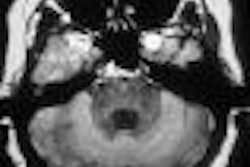FDG-PET appears to be more effective, accurate, and cost-effective than MRI for detecting high-grade and distant lesions in soft-tissue sarcomas. But the extra cost may not be warranted when it comes to detecting local lesions.
That's the implication of a recent study by Korean researchers, presented recently at the 2005 meeting of the American Academy of Orthopaedic Surgeons (AAOS).
"In soft-tissue sarcoma, a lot of research has been done regarding PET and MRI, but there is no validity and efficacy study. So a lot of clinicians wonder whether or not they should use PET for diagnosis," said Dr. Sung Wook Suh, the study's principal investigator and an assistant professor at South Korea's National Cancer Center in Goyang.
"The cost is high for FDG-PET, but as you can see in this study we show the exact cost-effectiveness. We show that it costs about $100 or more for each 1% of accuracy," Suh continued.
"In case of a high-grade tumor, PET is more effective and more cost-effective. So when one wants to choose PET for diagnosis of soft-tissue sarcoma, we can recommend PET for a high-grade tumor or distant lesion," he said.
To compare the efficacy and cost-effectiveness of FDG-PET with the magnetic resonance imaging typically employed in examining soft-tissue tumors, the researchers looked at 29 patients who had been evaluated using both types of imaging.
The suspected metastases were confirmed via pathology or follow-up imaging over at least 12 months, the investigators reported. Clinicians then ascertained the accuracy and the cost per accuracy of both diagnostic methods. For detecting local lesions, MRI and FDG-PET scans both achieved 83% accuracy. But FDG-PET fared much better than MRI for detecting distant lesions, achieving 93% accuracy versus 76% for MRI.
The rates for accuracy, sensitivity, specificity, positive predictive value (PPV), and negative predictive value (NPV) for the two modalities are show below.
|
|||||||||||||||||||||||||||||||||||
The researchers calculated the cost per accuracy for detecting local lesions at $598 per patient with MRI compared to $977 per patient with FDG-PET.
Despite its superior accuracy in detecting distant lesions, the researchers found that cost per accuracy in this scenario was still higher with FDG-PET -- $872 per patient versus $545 per patient for MRI. They suggested that prospective studies are necessary to truly determine the clinical efficacy of FDG-PET for this particular patient population.
By Jerry Ingram
AuntMinnie.com contributing writer
March 28, 2005
Related Reading
MDCT staging may obviate bone scintigraphy in some patients, March 6, 2005
New 10-minute dynamic PET scan generates useful results for oncology, December 30, 2003
PET protocols from head to toe, May 5, 2003
PET useful for staging pediatric bone sarcomas, February 7, 2003
Copyright © 2005 AuntMinnie.com


















